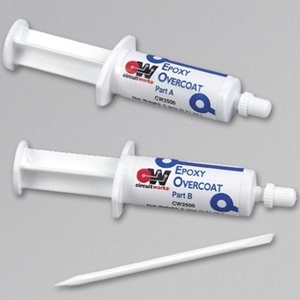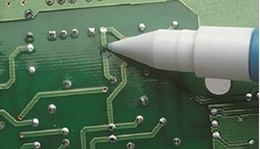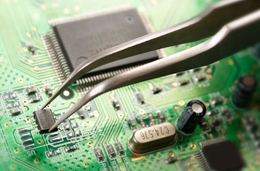CircuitWorks Epoxy Overcoat (Adhesive Syringe)
CircuitWorks® Epoxy Overcoat is a two component, 100% solids, high temperature resistant, permanent epoxy coating for electronics circuit and component protection. When properly cured, CircuitWorks® Epoxy Overcoat yields a chemically inert film which prevents the effects of corrosion, moisture, oxidation, abrasion, and thermal shock. The cured film can withstand brief exposure to high temperatures up to 600º F.
Features & Benefits
- Provides a tough, protective, green coating
- Outstanding thermal and chemical resistance
- Excellent dielectric properties; helps prevent electrical discharge
- Provides superior protection against moisture and abrasion
- Resists reflow temperatures
- Service temperature from -55 to 192ºF (-48 to 89ºC)
Short Term Exposure: 600ºF (315 ºC) for 1 minute - Meets the requirements of IPC-7721, 2.4.1
Applications
- Ideal for pre-reflow solder resist repair
- Electrically insulative coating helps prevent electrical discharge
- Will not be removed by solvent cleaners
| Specifications |
IPC-7721,2.4.1 ANSI/IPC J STD-001, IPC-7711 |
|---|---|
| Shelf Life | 12 months |
| Shipping Name | Adhesives N.O.I |










